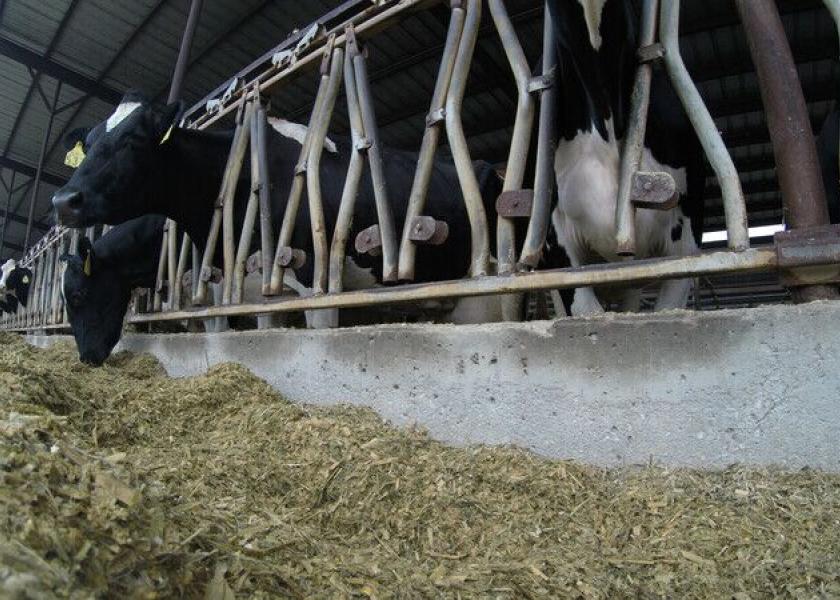Why Amino Acids Are So Important

Since amino acids are the building blocks of protein, it is easy to understand why a deficiency in one amino acid could limit protein formation and milk production. But dairy scientists have known for more than a decade that amino acids are involved in many more biological functions.
To date, they have identified more than 20 such functions, ranging from protein synthesis to reproduction, embryo development, growth, stress response, immunity and health, milk production, and behavior. Amino acids also affect gene expression. For example, methionine has been shown to affect more than 2,600 genes.
Scientists have identified ten essential amino acids: Arginine, histidine, isoleucine, leucine, lysine, methionine, phenylalanine, threonine, tryptophan and valine.
“Protein synthesis is regulated by multiple amino acids, and therefore all amino acids are required,” explains Mark Hanigan, a dairy nutritionist with Virginia Tech. “If you have 120 grams of methionine in the diet and you only need 80 grams, the diet might look OK. But other amino acids might be limiting.”
That’s what makes amino acid balancing difficult. Even more challenging, minimum daily requirements of most of the essential amino acids have yet to be worked out. So that get’s back to Van Amburgh’s point: You need maximum dry matter intake and rumination time to ensure cows can fully utilize and digest the feed they consume.
“We have tons of amino acids in our rations,” Hanigan says. “We just need to be more efficient at capturing them. If we are feeding a ration with 16% crude protein, there probably is not a lot of opportunity to actually make the animal perform better. But were just doing it inefficiently.”
As you ratchet down the crude protein in the ration to save money and reduce nitrogen loss, amino acid balancing becomes more and more important.
Researchers also know that protein utilization declines during the transition period, starting a week or two before calving. That happens regardless of crude protein levels, and only gets back to normal about four weeks after calving, says John Osorio, a nutritionist with South Dakota State University.
Several studies have shown that methionine supplementation during the transition period boosts milk production 7 to 9 lb/cow/day. “Milk yield and performance are easy to see, but there’s a lot more to it than that,” he says. “A lot of it has to do with better liver function and reduced immune suppression.
“Greater liver function decreases inflammation and oxidative stress, which further improves performance,” Osorio says. Diseases such as metritis and mastitis are also then less prevalent.
A trial conducted with the University of Wisconsin herd showed fewer health disorders, better reproduction and less culling with methionine supplementation, says Milo Wiltbank, a dairy reproductive specialist at the University of Wisconsin. If cows had fewer health disorders, they bred back sooner.
And even in cows with one or more health disorder, methionine-supplemented cows got pregnant about one heat cycle sooner, on average, than control cows. Herd exits were also less with methionine supplementation. About 18% of methionine-treated cows were sold or died by the end of their lactation. About 23% of the control cows left the herd.
In another trial done on 300-cow Wisconsin dairy, methionine supplementation had a profound effect on pregnancy losses in second and later lactation cows. Untreated control cows had a 20% pregnancy loss from 28 to 61 days after being insemination. Cows receiving supplemental methionine had just 6% loss of pregnancies during this same time period, says Wiltbank.
The same number of cows became pregnant in both groups. But the methionine-treated cows had embryos that were 22% larger than controls. This larger size likely resulted in fewer losses.
In the end, dairy researchers are only beginning to appreciate the effect amino acids play on the health, well-being and productivity of dairy cattle. Much more research, particularly on commercial dairy farms, is needed to fully understand the biology of amino acids.
In the meantime, dairy farmers need to do all they can to maximize dry matter intake and rumination time while reducing crowding and stress levels in their herds. As they reduce protein levels in rations, amino acid supplementation with known, proven supplements and by-product feeds with known digestibility becomes more important. Cheaper isn’t better, says Mike Van Amburgh, a dairy nutritionist with Cornell University. “You usually get what you pay for,” he says.
Editor’s note: Hanigan, Osorio and Wiltbank made their presentations at the 4-State Dairy and Nutrition Conference held virtually in 2020. You can access the Proceedings here: http://fourstatedairy.org/proceedings/2020/20_4state_proceedings.pdf







